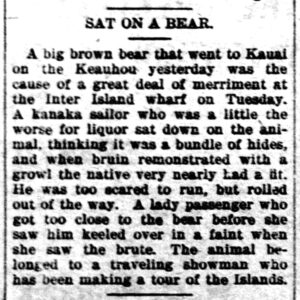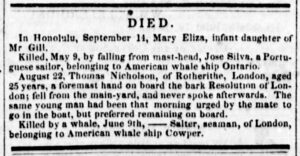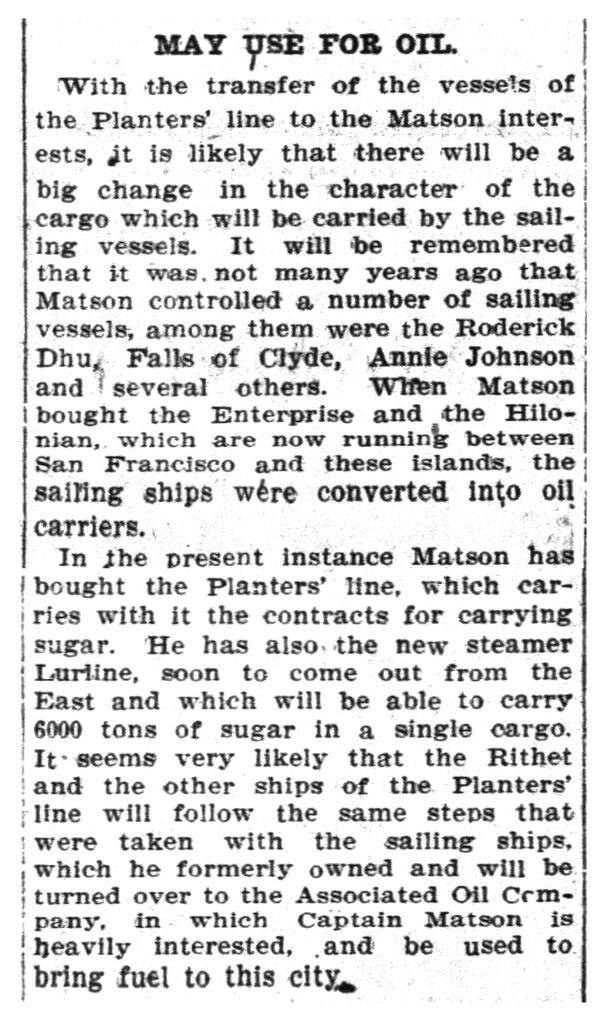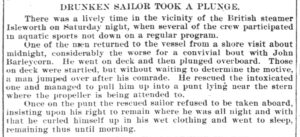100 Years Ago – Travel to Kīlauea
Since the mid-1800s, tourists have been attracted to Kīlauea on the island of Hawai‘i (Big Island). The growing reputation of the active volcano as a must-see destination was reflected in the creation of organized tour packages and the construction of hotels such as Volcano House and the Crater Hotel near the rim of the volcano. It was also recognized as part of Hawaii National Park* which was established on 1 August 1916.
As with Kīlauea’s current (2018) eruptive phase, a period of increased volcanic activity 100 years ago attracted visitors whose curiosity was sparked by advertising and personal and newspaper accounts:
The great and spectacular rise now in progress in the fire lake of the volcano of Kilauea is providing a sight for visitors which is without parallel anywhere in the world. The lake is now actually higher than its previous highest recorded level of 1912, and the large number of fire fountains playing in every part of the great area, together with the constantly changing appearance of the lake due to the vivid flows of molten lava over its surface prove an attraction to visitors from which they find it difficult to tear themselves away. (“Volcano Lake is at Higher Mark than Year 1912.” Honolulu Star-Bulletin, 9 November 1916.)
Mainland headline writers have recently been outdoing themselves. Taking meager telegraph dispatches about the rising of the lava in Kilauea’s crater, they have added an element of spice by throwing in a few words about the ‘sinister menace of the rising sea of fire,’ apparently believing the Kilauea is something like Vesuvius. The fact that tourists sit on the edge of the crater and watch the lava rise, munching sandwiches and sipping iced tea as they sit, or stroll around burning postcards** in the flaming cracks, is unknown to nine hundred and ninety-nine out of every thousand of mainlanders. (Honolulu Star-Bulletin, 20 February 1918.)
In the early 1900s, visitors to Hawai‘i could only travel between the islands by sea. Seeing there was a demand for excursions to Kīlauea, the Inter-Island Steam Navigation Company began offering a new service in February 1916. This $30.00 package deal included round trip passage on one of the company’s steamers between Honolulu and Hilo, lodging, and a choice of traveling via railroad or automobile from Hilo to the volcano.
Instead of ‘standing room only’ the Inter-Island steamer Mauna Kea should bear the inscription ‘sleeping room only’ when she steams for Hilo at 3 o’clock this afternoon.
So crowded is the boat with tourists and kamaainas going over to see the Volcano that a dozen or more passengers have agreed to sleep on mattresses laid on the upper deck, all staterooms having been sold out days ago.
The Mauna Kea is taking out more than 150 cabin passengers. Two tourists from Australia, when they heard no rooms could be obtained, enthusiastically demanded mattresses on deck. ‘It will be just like camping out in the bush,’ they said.
(“Tourists Will Sleep on Deck.” Honolulu Star-Bulletin, 10 February 1917.)
Matson also transported tourists to Hilo on its steamers:
Kilauea Volcano is attracting more tourists every week. When the Matson steamer Wilhelmina sails for Hilo at 5 o’clock this afternoon she will take 80 passengers, practically all tourists, who came from San Francisco to see the islands, and particularly the great crater of living lava.
This is the largest list of tourists going over to view the volcano that any Matson steamer has taken from Honolulu this season to date. They will have two days on the Big Island, as the liner will arrive at Hilo early tomorrow morning, giving them all Friday and Saturday for sightseeing, and bringing them back here early Sunday morning. (“Many Tourists Leaving for Volcano.” Honolulu Star-Bulletin, 17 February 1916.)
Bound for Hilo and the volcano, one hundred passengers embarked aboard the Matson liner Wilhelmina, which sailed at five o’clock yesterday afternoon, from Pier 19. (“Wilhelmina Takes Many to the Volcano.” The Honolulu Advertiser, 19 January 1917.)
The days of regular interisland passenger ships are no more. However, visitors can still arrive at Hilo by sea today, as a number of cruise ship lines call at Hilo Harbor. It is unfortunate that the current hazardous conditions and the closure of Hawai‘i Volcanoes National Park due to safety concerns will likely prevent them from seeing in person the types of spectacular views of Kīlauea’s volcanic activity enjoyed by tourists in 1918.
*Name changed to Hawai‘i Volcanoes National Park in 1961.
**Yes, postcard scorching was a thing! There was even a specific area that was popular for this activity, called Postal Rift.
Edit: Added Inter-Island Steam Navigation brochure image. (30 July 2018)
Edit: Added text from “Tourists Will Sleep on Deck” article. (1 September 2018)








